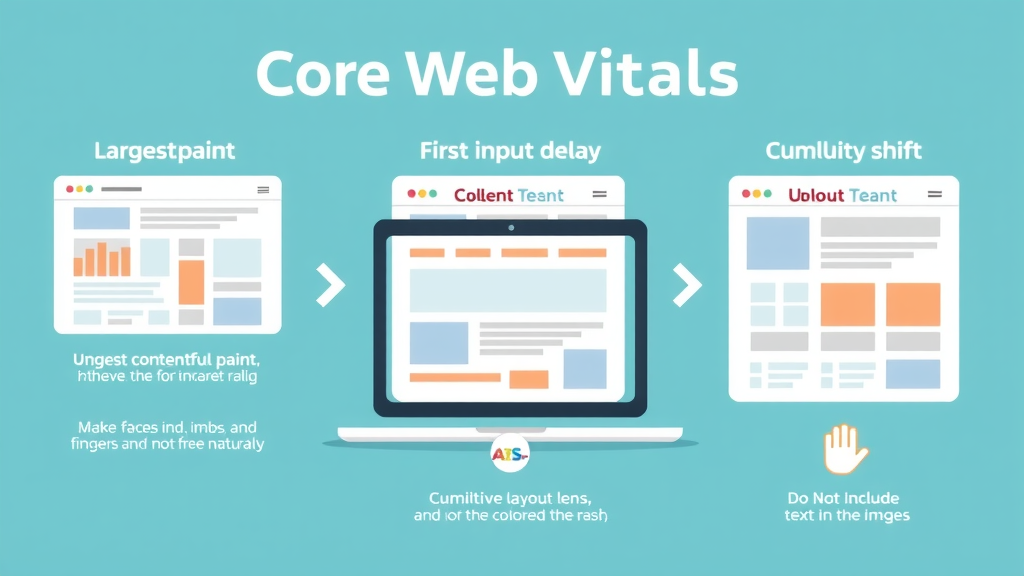Did you know that a one-second delay in website page load speed can slash your conversions by 7%—and every extra second costs you visitors and revenue? In today’s fast-paced digital world, users expect your web page to load instantly. The difference between a thriving business and bouncing users comes down to your website’s performance. This article unpacks why website page load speed is the ultimate growth lever—and delivers the simple steps to unlock faster load times, sky-high rankings, and more sales before the day is out. Ready to transform your site with measurable momentum? Let’s dive in.
Why Website Page Load Speed Is the #1 Factor in Online Success
"A delay of just one second in website page load speed can reduce conversions by 7%. That’s seconds lost, revenue lost."
The website page load speed isn’t just a technical metric; it’s the heartbeat of your online business. The faster your web page loads, the better the user experience—and that’s directly tied to your conversion rate , from lead generation to checkout. Major search engines, including Google, now factor site speed as a crucial ranking signal for both desktop and mobile search results. This means site speed isn’t a nice-to-have; it’s a non-negotiable for modern website owners who want to see fast, tangible results.
Additionally, slow page load times don’t just frustrate users—they also chip away at your credibility and can damage your SEO over time. In an environment where attention spans are shrinking, every second counts. Businesses that prioritize load time improvements consistently witness a surge in engagement, better web performance metrics, and increased conversion rates. To stay ahead, you must start thinking of website speed as not just a technical benchmark, but as the foundation of your business’s success strategy.

Understanding Website Page Load Speed: What Is It and Why Does It Matter?
Website page load speed measures the time it takes for all content on a web page to fully display in a user’s browser after the initial request. More specifically, page load time , sometimes called “load time,” is the span between a user clicking a link and the complete rendering of the webpage. This shouldn’t be confused with overall site speed , which is a broader average of load times across several pages of your site.
Every millisecond of delay impacts the experience your visitors have—affecting how engaging, usable, and trustworthy your website feels. Website speed is crucial not only for user experience (UX), but also for search engine optimization (SEO). Google prioritizes sites with quick load speed because they know it directly correlates to visitor satisfaction. When your web performance slips, so does your traffic, your rankings, and ultimately, your revenue.
- Definition of website page load speed, page load time, and load time: The speed at which a web page’s content appears after a user requests it.
- Overview of website speed vs. site speed: Individual page performance versus aggregated speed across your entire website.
- Importance for SEO, UX, and revenue: Impacts your rankings, conversion rates, and user retention.
What You'll Gain by Improving Website Page Load Speed
Enhancing your website page load speed pays immediate dividends across every key performance metric. For starters, users stay on your site longer, reducing bounce rates and increasing your chances of converting them into customers. Fast web pages keep people engaged, building trust and improving your overall retention.
Google’s search algorithms reward web performance gains with better rankings, pushing your site higher in the results. The upshot? Faster websites consistently see an “instant” boost in revenue and engagement. By simply optimizing a few high-impact elements—such as images, scripts, and server response—you’ll witness a measurable uptick in conversion rates and overall site performance.
- Reduced bounce rates and higher retention
- Better rankings from improved web performance
- Immediate boost to revenue and site performance

Table: Website Page Load Speed Benchmarks & Industry Standards
| Industry | Average Page Load Time (s) | Best Practice (s) | Conversion Rate Impact |
|---|---|---|---|
| E-commerce | 2.85 | 1-2 | Significant |
| Blog | 4.3 | <2.5 | Moderate |
| Corporate | 3.1 | <2.5 | High |
How Slow Website Page Load Speed Affects Website Performance
Slow website page load speed wreaks havoc on your entire online presence. It impacts core web vitals —the essential metrics Google uses to gauge web performance and user experience . As your page load time slows, your site speed test scores will dip and negative test results can quickly lead to search engines de-prioritizing your website. Gradually, you’ll see less traffic and diminished visibility for even your top content.
Your audience also quickly loses patience. Lengthy web page delays scare off users, causing bounce rates to spike and engagement to drop off. Over time, this sluggish experience can erode trust, diminishing your brand reputation and costing you repeat business. Don’t allow a slow website load to hold you back from climbing the rankings or achieving your financial goals. Prioritize site performance and enjoy the compounding benefits across all your marketing efforts.
- Impacts on core web vitals and web performance
- Drops in page load time can disrupt site speed test results
- Gradual penalties from search engines

How to Test Your Website Page Load Speed: Tools & Step-by-Step Guide
To make any improvements, you first need to gauge your website page load speed using trusted diagnostic platforms. The gold standard tools for conducting a website speed test or site speed test are Google PageSpeed Insights , GTmetrix , and Pingdom . These platforms simulate real-world conditions to provide detailed web performance insights, such as render-blocking css files , time to first byte , and total load time . Performing these speed tests regularly allows you to detect bottlenecks before they cost you traffic and revenue.
When you test your website , pay close attention to both lab data (how your site performs in a controlled environment) and field data (how real users experience your web page ). Look at core web vitals like Largest Contentful Paint (LCP), First Input Delay (FID), and Cumulative Layout Shift (CLS). Apply insights from each test result to fix immediate issues and track progress over time to see how improvements impact site performance .
- Best website speed test and site speed test platforms (Google PageSpeed Insights, GTmetrix, Pingdom)
- Interpreting speed test and website speed test results
- How to use test your website speed efficiently
Top Reasons Website Page Load Speed Is Slow—and How to Fix Each Issue
Several common culprits can bloat your website page load speed , but fortunately, most are fixable with informed, targeted actions. Large images and a lack of compression can dramatically increase your load time . Optimize every graphic for the web, using next-gen formats like WebP and aggressive compression without sacrificing quality.
Render-blocking JavaScript and CSS files are another notorious source of lag. These script files can prevent page elements from displaying until fully loaded. By minimizing and deferring non-critical css files and scripts, you instantly see a reduction in page load time . Also, a slow server response (high time to first byte ) or a poorly optimized web page structure can add precious seconds to each visit. Evaluate your server’s performance and streamline your page layouts to focus on speed.
- Large images and lack of compression
- Render-blocking JavaScript and CSS files
- Slow server response (high time to first byte)
- Unoptimized web page structure
- Bloated plugins and tracking scripts
The Ultimate Checklist: How to Fix Website Page Load Speed Right Now
Take action today using this concise checklist to achieve a lightning-fast website page load speed . Start by enabling browser caching —this lets repeat visitors load key elements instantly. Next, minimize CSS and JavaScript by merging, compressing, or removing unnecessary code, reducing harmful scripts that may block rendering of your web page .
Implement lazy loading for images, which only loads visual content as users scroll, slashing initial load times . Reduce redirects and HTTP requests by eliminating unnecessary internal jumps and ensuring each page loads only the scripts and files it absolutely needs. Finally, leverage a content delivery network (CDN) to distribute your content globally, ensuring quick site speed —no matter where users are located.
- Enable browser caching to improve page load
- Minimize CSS files and JavaScript
- Implement lazy loading for images with low web page impact
- Reduce redirects and HTTP requests
- Utilize a CDN for better site speed and global page load time

Web Performance, Core Web Vitals, and Page Load Time: What's the Connection?
Web performance is the blanket term for how quickly and smoothly your website delivers information to users. The recent focus on core web vitals —specifically Largest Contentful Paint (LCP), First Input Delay (FID), and Cumulative Layout Shift (CLS)—means that optimizing your page load time is inseparable from maximizing user satisfaction and SEO results. If your site speed underperforms on these metrics, your rankings and business may suffer.
Every site speed test and website speed test now emphasizes these core web benchmarks, reflecting Google’s push to create a better web for all users. When you focus on web performance , you’re not just chasing technical improvements; you’re ensuring every site visitor has a fast, seamless experience—and is more likely to return and convert. In today’s algorithm-driven marketplace, you simply can’t afford to ignore core web vitals and site performance .
- Explaining core web, core web vitals, and their effect on site performance
- Why site speed and web performance can't be ignored

Case Study: How Optimizing Website Page Load Speed Grew Revenue by 30%
"After optimizing our website page load speed, our pages ranked higher, bounce rates plummeted, and conversions skyrocketed."
One e-commerce owner was struggling with a slow page load and lackluster sales, despite a solid product lineup. By focusing on optimizing their site speed —compressing images, implementing a CDN, and maximizing core web vitals —they cut page load time from 4.5 seconds to under 2. Soon after, their web performance soared. The business recorded a 30% jump in revenue, higher positions in Google rankings, and a notable improvement in user experience . This transformation isn’t unique; it demonstrates what smart upkeep can do for any business.
The takeaway is clear: optimizing website page load speed pays off quickly. Fast fixes in web performance translate to better conversion rates , higher engagement, and a healthier bottom line, no matter your industry or business size.
People Also Ask About Website Page Load Speed
What is a good load speed for a website?
- A good website page load speed is under 2-3 seconds. According to site speed test data, each extra second increases bounce rates and decreases user satisfaction.
How to check page load speed of a website?
- Use free tools like Google PageSpeed Insights , or perform a speed test on GTmetrix to see detailed web performance and load time metrics.
How to fix page loading speed?
- Address common bottlenecks—compress images, minimize css files , use CDNs, and reduce redirects for instant gains in page load speed .
Why is my website loading so slowly?
- Reasons include unoptimized images, too many plugins, slow hosting, and bloated code that all increase page load time .
FAQ: Optimizing Website Page Load Speed
- What impacts site speed test results the most? The main factors are uncompressed images, excessive CSS and JS files, slow server response, and high numbers of HTTP requests.
- Does website performance affect SEO? Absolutely. Website performance , especially page load speed , is a confirmed ranking factor in Google’s search algorithms.
- How often should I test your website and page speed? Test after any significant update, at least once a month, and whenever you receive user complaints about site speed.
- Can plugins hurt web performance? Yes, especially outdated or poorly coded plugins. Limit active plugins to those you truly need to ensure optimal site performance .
- What are the best free site speed test tools? Google PageSpeed Insights, GTmetrix, and Pingdom deliver comprehensive performance monitoring and actionable recommendations.
Key Takeaways for Achieving Fast Website Page Load Speed
- Focus on reducing page load time to boost user satisfaction and SEO
- Regularly use speed test and site speed test tools
- Tackle image optimization, server response, and code minimization

Take Action Now: Get an Expert Website Page Load Speed Audit & Unlock Immediate Results
- Ready to see faster load time and higher conversions? Test your website page load speed today with our expert audit—and watch your business grow instantly.
Improving your website’s page load speed is crucial for enhancing user experience, boosting SEO rankings, and increasing conversion rates. To delve deeper into effective strategies, consider exploring the following resources:
- “PageSpeed Insights: How to Analyze & Improve Your Site Speed” ( searchengineland.com )
This guide provides a comprehensive overview of how page load speed impacts user experience, SEO rankings, and conversion rates. It also introduces key metrics for measuring page speed and offers insights into Google’s PageSpeed Insights tool.
- “9 Quick Ways to Improve Page Loading Speed” ( blog.hubspot.com )
This article outlines practical steps to enhance your website’s loading time, including image optimization, reducing redirects, and leveraging browser caching. It also recommends tools and plugins to assist in these optimizations.
By implementing the strategies discussed in these resources, you can achieve a faster, more efficient website that meets user expectations and drives better business outcomes.
 Add Row
Add Row  Add
Add 




Write A Comment